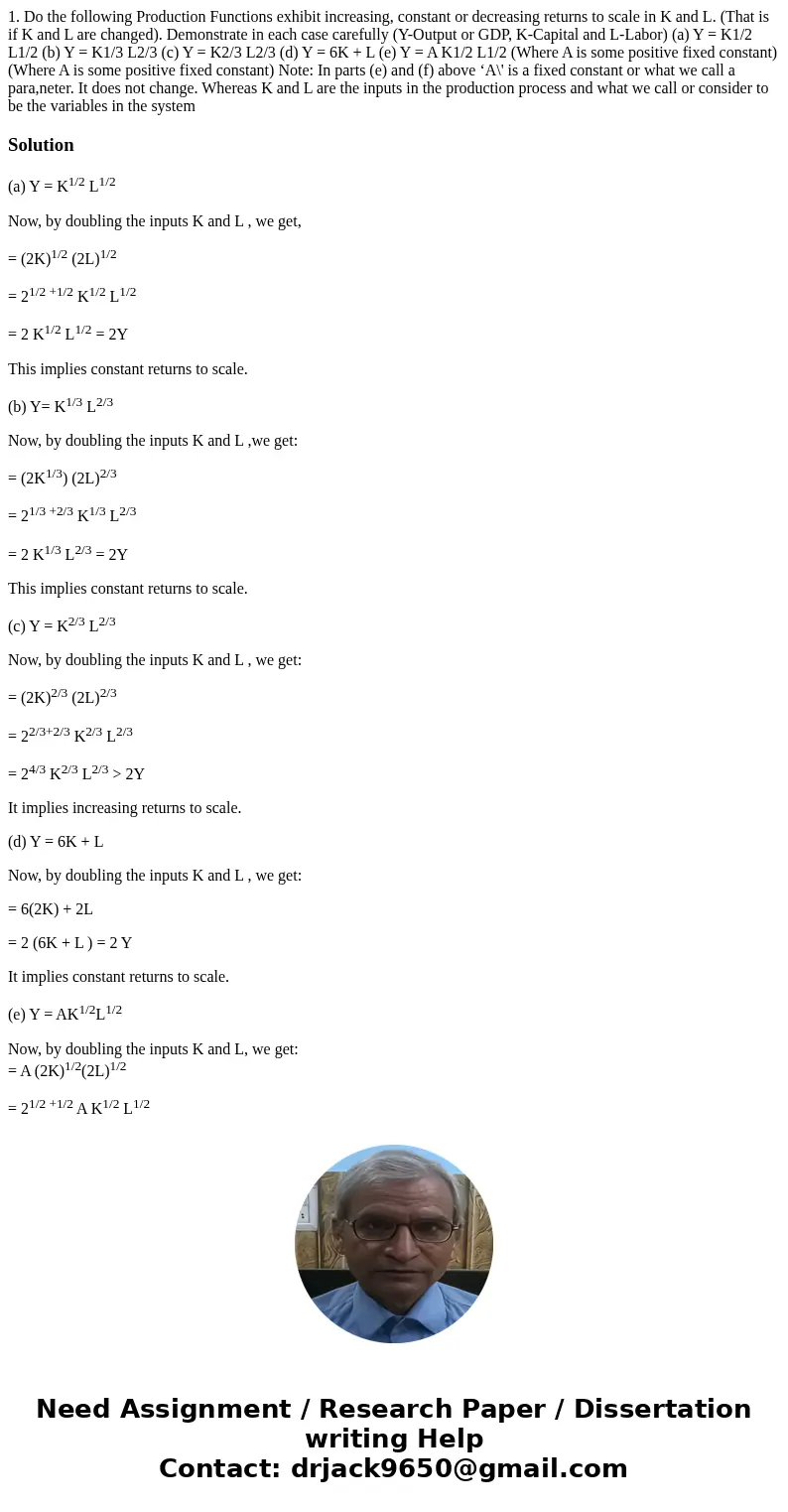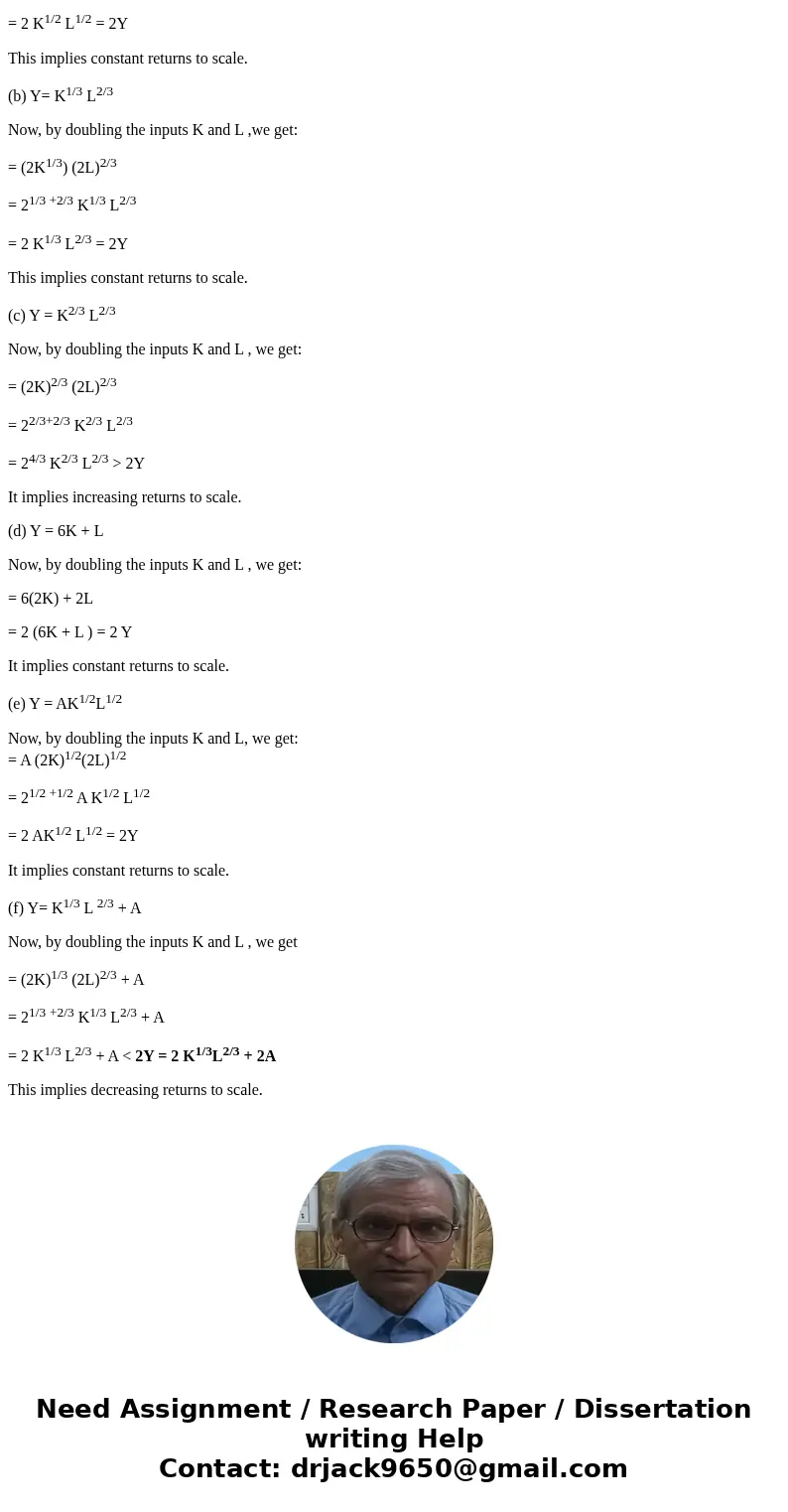1 Do the following Production Functions exhibit increasing c
Solution
(a) Y = K1/2 L1/2
Now, by doubling the inputs K and L , we get,
= (2K)1/2 (2L)1/2
= 21/2 +1/2 K1/2 L1/2
= 2 K1/2 L1/2 = 2Y
This implies constant returns to scale.
(b) Y= K1/3 L2/3
Now, by doubling the inputs K and L ,we get:
= (2K1/3) (2L)2/3
= 21/3 +2/3 K1/3 L2/3
= 2 K1/3 L2/3 = 2Y
This implies constant returns to scale.
(c) Y = K2/3 L2/3
Now, by doubling the inputs K and L , we get:
= (2K)2/3 (2L)2/3
= 22/3+2/3 K2/3 L2/3
= 24/3 K2/3 L2/3 > 2Y
It implies increasing returns to scale.
(d) Y = 6K + L
Now, by doubling the inputs K and L , we get:
= 6(2K) + 2L
= 2 (6K + L ) = 2 Y
It implies constant returns to scale.
(e) Y = AK1/2L1/2
Now, by doubling the inputs K and L, we get:
= A (2K)1/2(2L)1/2
= 21/2 +1/2 A K1/2 L1/2
= 2 AK1/2 L1/2 = 2Y
It implies constant returns to scale.
(f) Y= K1/3 L 2/3 + A
Now, by doubling the inputs K and L , we get
= (2K)1/3 (2L)2/3 + A
= 21/3 +2/3 K1/3 L2/3 + A
= 2 K1/3 L2/3 + A < 2Y = 2 K1/3L2/3 + 2A
This implies decreasing returns to scale.


 Homework Sourse
Homework Sourse